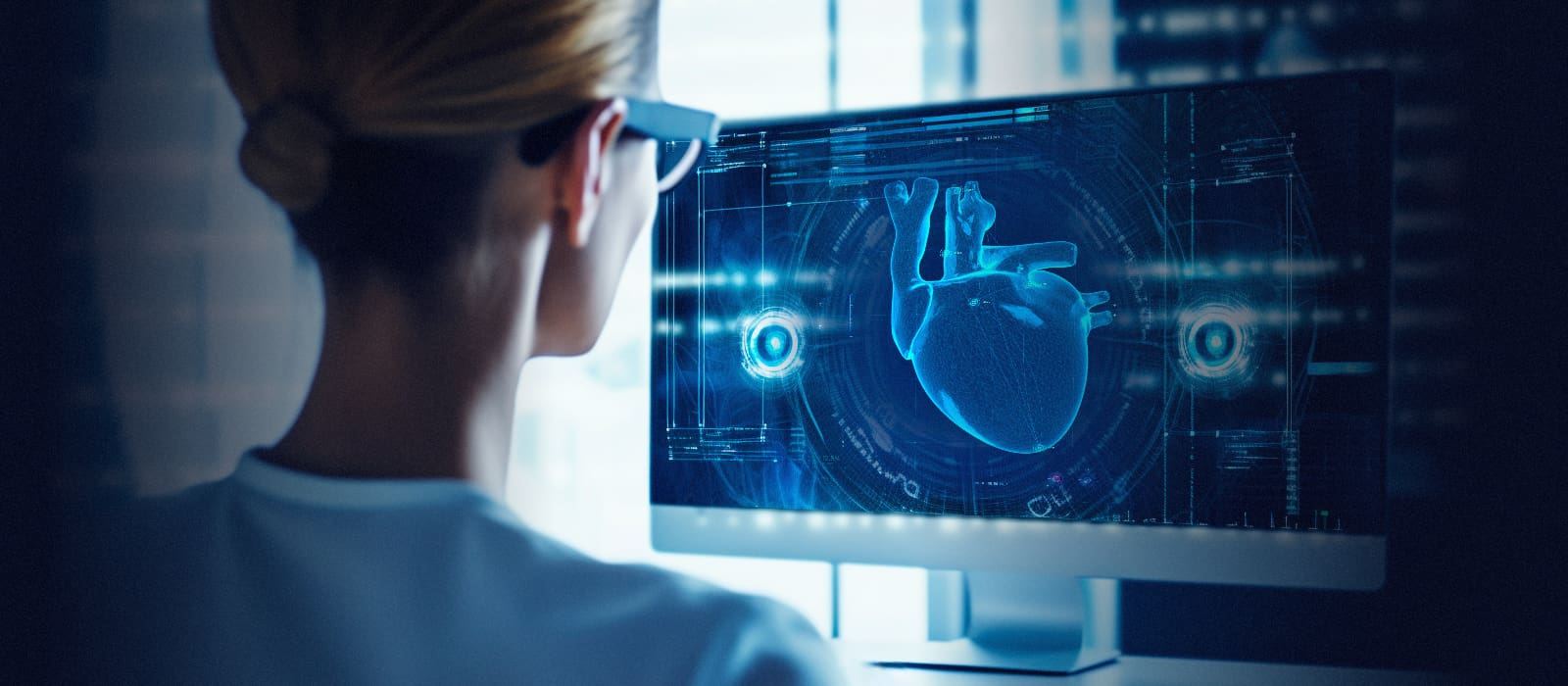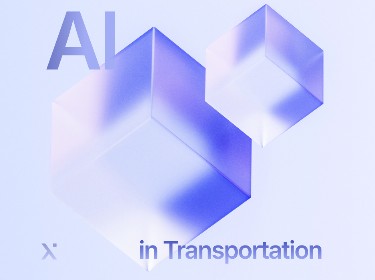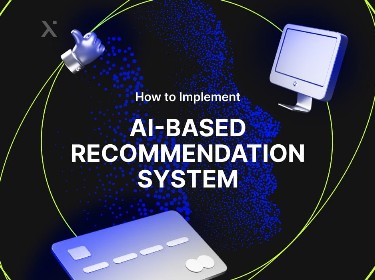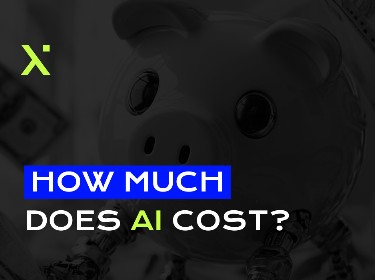Imagine a future where technology moves from passive observation to active vision, fundamentally transforming healthcare. Computer vision promises to reshape how we diagnose diseases and monitor patient health. But how do algorithms do that?
The computer vision in healthcare market is projected to reach a substantial value of $22.2 billion by 2030, experiencing a remarkable growth of 47.8% (CAGR) from 2023 to 2030. This significant expansion underscores the increasing integration of computer vision (CV) technologies in the healthcare sector.
In the last decade, the advances in computer vision have been primarily driven by the maturation of deep learning and the availability of extensive labeled datasets. The generation of large amounts of digital data across various industries has also fueled the growth of modern CV technologies.
As computer vision continues to evolve, its application in healthcare promises to transform the sector by enhancing diagnostics, patient monitoring, and even medical training and procedures. Let’s take a closer look at these and many other use cases of CV in this field.
What is computer vision in healthcare, and how does it work?
![]()
Similar to how humans perceive and interpret visual data, computer vision focuses on understanding images and videos. Computer vision closely relates to artificial intelligence development because it aims to replicate human vision capabilities using computational methods.
Deep learning, particularly through convolutional neural networks (CNNs), has significantly enhanced computer vision by excelling in image classification, object detection, and segmentation. These models master hierarchical visual features from extensive labeled data, adeptly generalizing to new images.
Computer vision in healthcare, also powered by CNNs, has shown promising results in complex medical diagnostics across dermatology, radiology, and pathology.
Computer vision systems follow a series of steps to process and analyze visual data:
- Image acquisition: The process begins with capturing images or videos using cameras or other imaging devices. These visual inputs serve as the foundation for subsequent analysis.
- Preprocessing: Raw images undergo preprocessing steps, including resizing, normalization, and noise reduction.
- Feature extraction: In this step, computer vision algorithms engage in pattern recognition to extract relevant features from the preprocessed images.
- Feature representation: Extracted features are often represented in a suitable mathematical form that machine learning algorithms can process.
- Recognition and interpretation: Once features are extracted and represented, computer vision systems use various algorithms such as classification or detection to recognize objects, scenes, or patterns in the images.
- Post-processing and decision-making: Finally, the output of the computer vision system may undergo post-processing steps, such as refining object boundaries, filtering out false positives, or aggregating predictions.
Find out how our data visualization services can transform your data into interpretable, actionable insights for your business or organization
8 main applications of computer vision in healthcare
![]()
To better understand the impact of computer vision in healthcare, let’s explore some of its more prominent applications, including tumor and cancer detection, early diagnosis, image analysis, infection prevention, and surgical real-time assistance. Plus, CV plays a crucial role in automated health monitoring, healthcare research, medical staff training, and more.
1. Tumor and cancer detection
Computer vision in healthcare is used to delineate the boundaries of tumors within medical images. Accurate segmentation facilitates tumor localization and size measurement, providing essential information for treatment planning and monitoring disease progression.
Deep learning technologies are among the key developments that make these changes possible. Additionally, computer vision systems can be trained through ML and deep learning with cancerous and healthy tissue data to detect skin and breast cancer more accurately.
Since many diseases can be identified with ultrasonic medical pictures, ultrasonic image classification is one of the hottest research issues in biomedical engineering and computer sciences.
For example, a breast cancer study utilized computer vision and deep learning to develop a new grid-based deep learning framework. Using an ultrasonic image dataset, this framework automatically selects the best-performing networks to detect breast cancer. The developed model achieved 97.18% classification accuracy using 10-fold cross-validation.
2. Early diagnosis of diseases
Large volumes of data, consisting of thousands of photos, are used to train computer vision programs, enabling them to accurately detect even minute differences. As a result, doctors can identify subtle changes that might have otherwise been missed. Furthermore, modern technology and software can simplify, unify, and streamline many processes.
Our AI developers have created AIRA — an artificial intelligence retina analyzer designed to address challenges in retina pathology diagnosis. To enable human retina image recognition, we utilized machine learning algorithms. The final solution is capable of performing the following:
- Identify and differentiate individual symptoms of human retina pathologies
- Diagnose diseases based on input images
- Create a database of pathological cases
Image data was obtained from multiple sources and therefore needed to be normalized and unified to be suitable for analysis and training. Our data scientists utilized the RGBA image format to standardize all data.
We have based our model architecture on variations of the top-performing convolutional neural network, U-Net. Implementing this architecture model allowed us to use fewer training images and yield more precise segmentations than any other model. It also significantly reduced the warping error in prediction and provided good results in other metrics.
Turn to our machine learning consulting and development team to start working on your own transformative ML-powered application
3. Medical image analysis
Computer vision algorithms analyze various medical imaging modalities, such as X-rays, CT scans, MRIs, and mammograms, to detect abnormalities indicative of tumors or cancerous growths.
Medical image analysis is a method that creates visualizations of specific organs and tissues to identify subtle changes in tissue density, shape, or texture that may be indicative of malignancies.
For example, computer vision systems can perform cell counting that is faster, more accurate, and unbiased. However, cell counts must be accurate, consistent, and rapid, especially for quantitative measurements of cellular responses, to ensure reliability and effectiveness in analysis.
Scepter, being such an instrument, uses a combination of analog and digital hardware for sensing, signal processing, data storage, and graphical display of cells. Moreover, it has a disposable tip with a microfabricated cell-sensing zone that can discriminate cell size and volume at sub-micron and sub-picoliter resolution.
It is enhanced with precision liquid-handling channels and electronics, graphically displaying cell population statistics as histograms, and counting is typically completed in less than 20 seconds.
4. Infection prevention
The health sector extensively used computer vision in its fight against the coronavirus. With computer vision, it has become possible to detect the parts of the lungs affected and altered by the virus in infected individuals.
Motivated by this and inspired by the open-source efforts of the research community, COVID-Net, a deep convolutional neural network, was designed and tailored for the detection of COVID-19 cases from chest X-ray (CXR) images that are open source and available to the general public. At its initial release, COVID-Net was one of the first open-source network designs for COVID-19 detection from CXR images.
Additionally, CV solutions were utilized in another critical issue during the pandemic. To prevent the spread of the disease, many technologies such as masked face detection, thermography, and germ screening were put into use.
5. Surgical real-time assistance
Computer vision in healthcare can also be applied in surgery. With computer vision techniques, doctors can better prepare for invasive surgical procedures beforehand and minimize complications.
Critical clinical applications for deep learning include enhancing surgeon performance through real-time skills assessments, contextual awareness, and training. These goals have been the primary focus of early research, mainly in laparoscopic and robotic video-based surgery.
Another example would be the Triton system, a deep-learning application that estimates blood loss in real-time during and after surgeries. It processes images of blood-stained sponges, suction machines, and other surgical instruments to assess the blood loss volume and automatically filters out additional components. Under its guidance, surgeons can identify the amount of blood required to give to the patient during or after the procedure.
6. Automated health monitoring
Automated detection algorithms can flag suspicious areas for closer inspection, potentially reducing the time required for diagnosis. Computer vision in healthcare systems can automate the screening process by analyzing large volumes of medical images to identify regions of interest (ROIs) that may require further examination.
Such quantitative metrics enable clinicians to stratify patients based on their risk profile, predict treatment response, and monitor disease progression over time.
Explore our predictive analytics services to improve forecasting and make data-driven decisions that benefit businesses in healthcare and beyond
7. Healthcare research and medical trials
Computer vision in healthcare can also serve as a decision support tool for healthcare providers, assisting in interpreting complex imaging data and guiding clinical decision-making. Moreover, integrating computer vision with electronic health records (EHRs) enables seamless access to patient data and facilitates interdisciplinary collaboration among healthcare teams.
In collaboration with Columbia University, important organizations supporting such efforts, such as the National Robotics Engineering Center at Carnegie Mellon University in Pennsylvania (NREC), created a computer vision algorithm to monitor patients in clinical trials for spinal muscular atrophy (SMA) therapies.
The vision system pushes the line further for better patient selection, recruitment, and retention during clinical trials. Also, it reduces the cost of clinical trials for drug therapies while speeding up their approval by the FDA.
8. Medical staff training
The alternatives available to healthcare practitioners, particularly surgeons, have evolved beyond traditional training and practice patterns. Instead, simulation-based surgical platforms have emerged as an effective medium for training and assessing surgical skills. Before entering the operating room, trainees can improve their surgical abilities with simulation.
Computer vision in healthcare professions can gain intensive practice and receive detailed feedback thanks to these simulations.
TouchSurgery, an AI-powered surgical video and analytics platform, provides precise and interactive surgical simulators in response to these demands. Videos of the surgeries are anonymized and uploaded to the cloud using its DS1 computer, making it easy to train and discover new techniques.
Check out our healthcare software development services to revolutionize your healthcare technology solutions and streamline patient care
Closing thoughts
Computer vision holds immense potential for revolutionizing various industries. As industries increasingly embrace autonomous ecosystems, the demand for computer vision services continues to rise.
At PixelPlex, we also rise to these demands and help delegate domain-specific jobs to advanced computer vision models. Our computer vision developers design and train them to excel in operational tasks and long-term missions, allowing you to leverage their remarkable precision for tangible business benefits.
Alongside CV development, we provide comprehensive custom software development services, R&D, advisory, integration, and tech support. However complex your challenge is, we’ll build the right algorithm to interpret large-scale imaging and video content for streamlined, educated decision-making.




